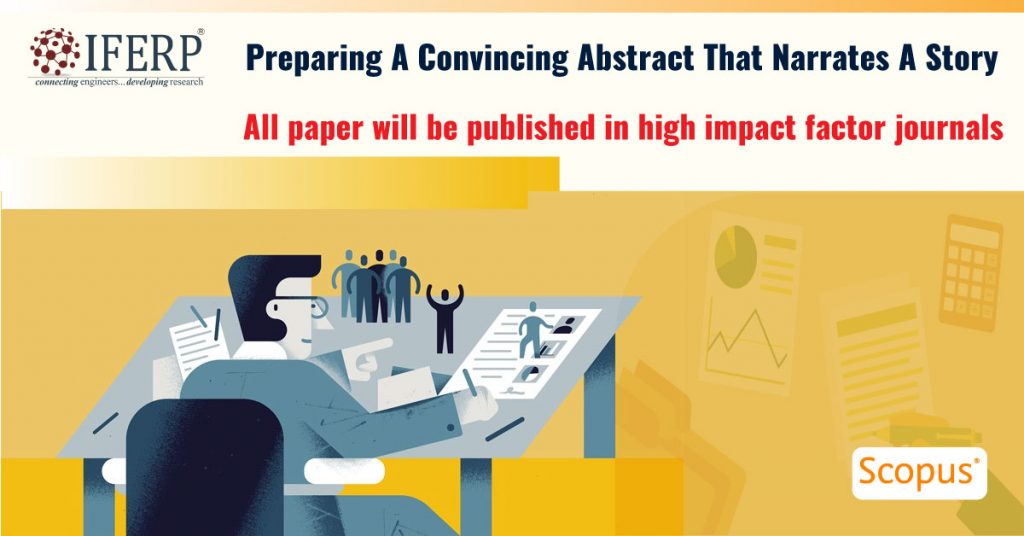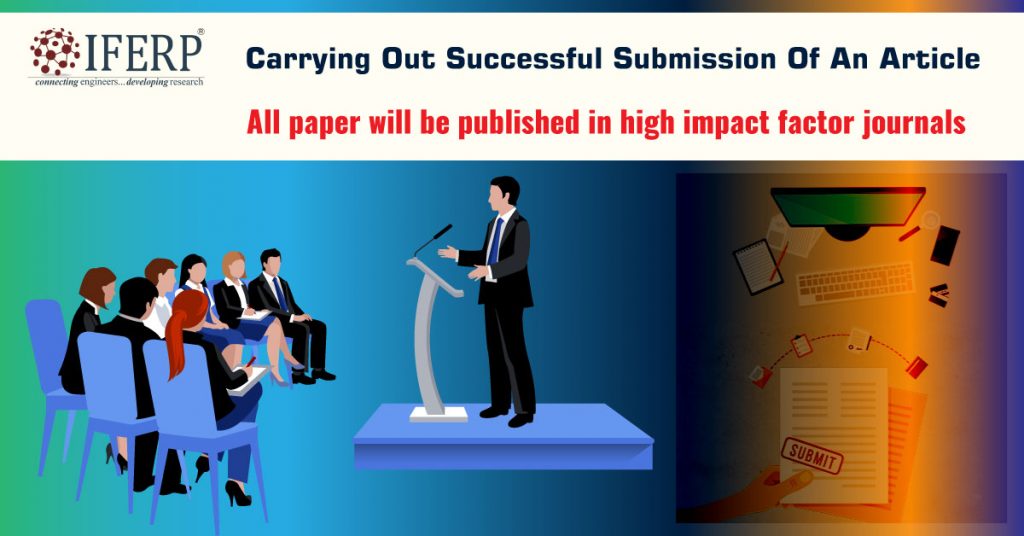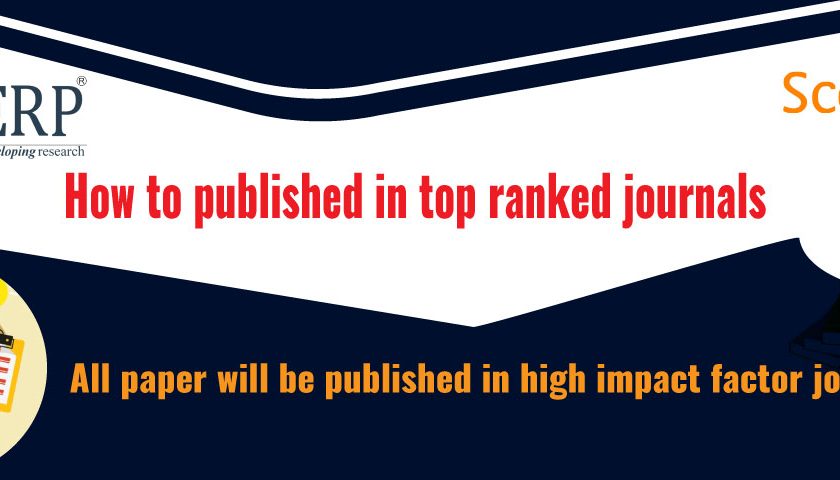The academic publishing industry is huge, and there are thousands of journals from which
researchers can choose. However, given the appalling rejection rates of peer-reviewed journal submissions and the six to twelve-month timeframe for publication, the question of how one can find out which high impact journal is the best for them always remains.
Detailed below are some steps one can take to dramatically improve their chances of getting published.
- Using Journal Metrics To One’s Absolute Advantage
Journal Citation Metrics help researchers identify the top-cited journals in their field. They can come from journal ranking tools and publisher websites.
- All citation metrics have strengths and limitations, so researchers should make sure to use a range of metrics from different sources. Journal ranking tools employ different metrics and cover different journals.
- Citation scores vary widely across disciplines and so researchers should compare only journal metrics within a discipline or sub-discipline.
- Some disciplinary areas are under-represented in current indicators and have individual ranking lists.
- High citation scores are not necessarily measures of quality.
- Performing Comprehensive & Regular Plagiarism Checks
Journals (whether Scopus indexed journals 2023 or otherwise) do not like plagiarism because it represents a violation of ethical publishing standards and often leads to rejection. A rejection for plagiarism can negatively impact an author’s reputation and also their credibility as a researcher.
- Observing Strict Adherence To Journal Guidelines
If one’s research is excellent and groundbreaking, they have a well-defined story, their numbers are remarkable, and their writing clear, they can further reduce their chances of rejection by keenly following the journal’s guidelines in every detail. For high impact journals, in particular, this list of guidelines can be long and include specifications on the –
- number of words,
- reference format,
- order of sections,
- requirements for titles, headings, and subheadings.
But paying careful attention to these specifications is worth it. By adhering to them, researchers show the publisher that they have put in the effort and that they are also making their life easier (which is always a good thing).
- Preparing A Convincing Abstract That Narrates A Story
It is not enough for researchers to list a summary of their results in their abstracts, especially if they are writing for a journal with a large audience. They should think about it carefully, asking, “what will my findings mean to a scientist in a different field or discipline?”. Structuring their abstract so that it tells a story is something one can do for most journals unless they specify some distinct abstract structure to be followed. Those who are facing difficulties with preparing their abstracts can also avail themselves of professional abstract writing services from globally reputable organizations such as IFERP.

- Including Easy-To-Understand Facts, Figures & Diagrams Helps Readers Immensely
A researcher’s numbers are at the heart of their article, they display their findings, and many readers (and journal editors) jump straight to the numbers. The worst thing one can do here is to confuse their readers. Clutter, inconsistent color coding, too much data, or the wrong plot type can put off readers badly and, in some cases, distort the direction of their data.
- The Research Must Be Of Some Consequence In Helping Solve A Crisis/Challenge
The most accurate numbers, the most impactful narrative, and perfect English won’t help a researcher if their research isn’t the sort published by top journals. These scientific publications and journals often contain research that the science sections of newspapers include and that is reported in the science programs of the radio stations. Before one can consider submitting their article, they should ask themselves if they can imagine a headline about their research study in the New York Times or the Guardian (or a popular regional newspaper), or at least in a magazine or an online portal specializing in the popularization of scientific research.
Specifically, high-impact journals seek out studies that are (socially) relevant. They have to solve a big problem and have some serious implications, whether it’s for an application or something more basic.
Researchers can do a quick check by telling a relative, friend, or neighbor who isn’t a scientist about their study. If they are immediately able to understand the theme of the research work and are impressed, the research study is most likely a valid candidate then.
Even if one presents an answer to a big problem, their research must be solid enough that Nature, Science, or the Cell can consider it. These reviews typically look for studies whose results are corroborated using different relevant methods or taking into account various conditions or model systems or whatever is applicable to your study. This means that the data sets should generally be quite complete.
For example, if one notices the X effect, one should not only verify the effect using method A but with method B as well. If they have invented a new method Y, they need to investigate whether it works on both model systems C and D, and for the relevant parameters, E, F, and G. This may mean that they will need to include the results in a study that they would have divided into two or more articles for a more specialized journal.
- Keeping An Eye Out For Predatory Journals
In 2015, the university publishing market had an annual turnover of close to thirty billion dollars. This turnover has increased considerably over the past two years. Therefore, this growth has given rise to a large number of predatory publishers that attempt to scam early career researchers in exchange for publishing their research. Unfamiliar with the process of research publication and drawn to the prospect of being published sooner than expected, early career researchers often fall prey to these editors.
- There are a few steps that researchers can take to avoid getting scammed by these predatory journals –
- Being Wary Of Unsolicited Calls & Emails
Reputable publishers (such as Scopus journals) never cold call or send unsolicited emails to solicit submissions. These are mainly the crooks who access researchers’ information through Google Scholar, Academia.edu, etc., and then make cold contacts.
- Making Full Use Of Jeffrey Beall’s List Of Predatory Journals
Jeffrey Beall, a librarian, built a list of predatory journals and publishers. In case one finds a suspicious publisher, they should check to see if their name appears on this list. If so, one should make sure they discontinue all communications with this journal and stay away from them.
- Unindexed Journals
Scopus, Web of Science, UGC, PubMed, JSTOR, SHERPA, and DOJA (Directory of Open Journal Access) are some of the popular authentic journal databases. If one is unsure of the authenticity of a publisher, they should check to see if their journal is listed in these databases.
- Lack Of Clarity On APCs (Article Processing Charges)
Most open-access journals impose APCs on researchers. This is a set rate that one can acquire information on from the journal’s website. However, predatory journals often falter when citing APC or their websites or lack proper APC breakdown.
- Picking The Best Journal Possible
Allaying one’s fears of being scammed by a predatory publisher is just one step towards getting their research published. The real test of their efforts begins with submission when their article is reviewed. It is at this point that most articles are rejected for failing to follow the formatting guidelines imposed by the journal. Every journal has its own formatting, styling, and SEO guidelines. Failure to comply with these conditions results in rejection.
A common mistake early-career researchers make is that they write an article first and then decide in which journal they will be published. Another mistake they make is aiming for the top ranked journals and publications in their discipline. Naturally, this increases the chances of rejection for beginners. The quality and reputation of journals are important. However, the credibility of journals and their faster acceptance rates are of utmost importance.
Therefore, a much better approach is to –
- Prepare a list of journals in the area of one’s research. One can use their university library search or the Internet to find the journals.
- Once the list is ready, they can rearrange it based on the relevance and quality of the reviews.
- They can then check to see if the journals on their list have already published on their specific topic of interest.
- Then, they can browse through their references and bibliography to see if the sources are from one or more of the journals on their list.
Together, points 3 and 4 should give one a good idea of which journals to contact to maximize their chances of getting published.
- Clearly Comprehending The Submission Process
As mentioned earlier, non-adherence to journal guidelines is one of the most common reasons why research articles are rejected. Once one has decided which journal they want to publish in, they should visit the journal’s website and read their guidelines. Almost every top journal has a different submission process in place.
The guidelines for each journal tend to vary depending on the following details –
- Minimum and maximum length of the article
- SEO
- Formatting (includes space, font, margin, headers, etc.)
- British (or Australian) / American English
- Choice of media – electronic, paper or both
One can make use of tools such as Typeset.io to make sure their article is 100% compliant with the journal guidelines.
- Carrying Out Successful Submission Of An Article
When submitting an article for publication, one should be sure to submit it to only one journal at a time. This is because most journals refuse to consider an article for publication if it is being considered for publication in another journal. Most publications necessitate that researchers declare that their work is currently not being considered for publication in other journals.

There are journals that only accept paper submissions by mail, while others only accept electronic submissions (in .doc, .docx formats), while others may require researchers to submit in both formats. It is therefore essential to carefully read the submission guidelines on the journal’s website.
- Preparing A Convincing & Compelling Cover Letter
The entire purpose of a cover letter is to convince an editor that one’s research is worth publishing in their journal. Therefore, it is incredibly crucial that researchers write their cover letters as sincerely as they can.
- Listed below are a few tips one can make employ when writing the cover letter for their journal submission –
- If possible, they should research the publisher’s name and address the cover letter to them by name. Researchers can find out the name of the publisher through the journal’s online submission system. This information is generally public domain.
- Within the first or second paragraphs of the cover letter, researchers should list the name of their manuscript, include the name of the author(s), describe the reason for their interest in the research work they have done, and the main findings of their research. In addition, researchers can refer to previous work or previous articles that the journal has published.
- In the next paragraph, researchers should discuss the purpose and scope of the review. They should write about how their work contributes to the purpose of the journal and fits within its scientific coverage. They should also mention why their work would be valuable to their readers.
- Researchers should remember to conclude their cover letters with statements telling the editor that their manuscripts are original and that no part is under consideration for publication elsewhere. Some journals also seek researchers to submit a list of reviewers to whom their article can be sent for review. If the journal asks for it, they should include the list in the final part of the letter.
Once submitted, the peer review can take up to six months. It mainly depends on how a publication has set up its peer-review process. A few publications have a two-step review process in which an editor first reviews the articles to decide if they are worthy of peer review. If an article passes this test, it is then sent to a reviewer or a group of reviewers (these are academics in the field that one’s article is based on). This process can sometimes take several months, and eventually, the author will receive an email or letter from the journal, in which the editor states the editorial board’s decision on the acceptance/rejection of the article.
If the journal decides not to publish an article, the author will get the reviewer’s report and comments on their work. If they don’t, the author can ask for them. This will help them improve their article before sending it to another journal for review.
It is rare that a researcher’s work is accepted the first time. Nevertheless, most of the time, it is not their research work but the carelessness that researchers display when approaching publishers as well as presenting their research that results in their applications and submissions getting rejected. If researchers can perfect the approach they use to reach publishers, they can publish their research on their very first try.



One comment
Comments are closed.